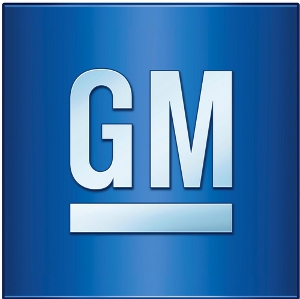GM's IT and Cultural Transformation


Randy Mott, the new General Motors CIO, has some very big changes in mind for the number two automaker.
GM is second to Toyota today. Mott comes to GM from a short stint with HP, but a solid track record from Wal-Mart and Dell.
Mott is hoping to use the same successful formula to transform GM's IT Operations -- but he needs to also transform the culture, if he hopes to succeed.
His plan at GM includes insourcing, data center, data warehouse and software consolidation, the establishment of software development centers, and the portfolio management.
1. Insource: Flipping from a 90% outsourced IT operations to 90% insource. A herculean hiring task lies ahead for Mott and his HR department. Ironically, he'll likely need to outsource some of this work or grow the HR department.
2. Data center consolidation: GM is moving, or exiting, 23 data centers to 2 new, undisclosed, locations. Undisclosed because they are still looking at locations, Mott suggests. I wrote on this recently, Datacenter and Workload Migrations: Lessons from the Trenches.
3. Application consolidation: 40% or more of GM's applications could go in efforts to standardize the environment. Here again, Mott suggests that he has not yet selected a platform.
4. Software development centers: Likely in the US given that Mott is insourcing, 3 sites, based on local development talent. Silicon Valley?
5. Portfolio management: Mott is, rightly, ensuring that all projects pass a cost-benefit analysis and that priority is set by the business. This is likely a reaction to having projects, run by many vendors, with questionable outcomes, as well as an effort to reduce costs. To manage these projects he will need a PMO.
6. Data warehouse consolidation: GM has about 200 data marts which they plan to consolidate to a single architecture. The challenge will be in ensuring that the data is well understood, currently it does not have a single view of customer data. Warranty, VIN, parts, etc are siloed. Their hope is to “be very, very data-driven rather than episodically driven," Akerson told Fortune's Geoff Colvin.
While sweeping technology changes to the degree that Mott is proposing are a challenge, so are the associated cultural changes. While at HP, Mott was challenged with reducing IT spending and a transformation of HP much like what he proposes for GM. Though it caused trouble for him at HP, where the culture was rigid and well established.
A couple of months after CEO Hurd was ousted, so was Mott, replaced by Meg Whitman.
While GM has been humbled by the recent fall from its one time position as Fortune 1, the culture there will need to be over come. “A strategy that is at odds with a company's culture is doomed. Culture trumps strategy every time”, according to Jon Katzenbach and cohorts in a recent article for the Harvard Business Review, Cultural change that Sticks.
Many leaders blame their company's culture for thwarting significant change initiatives, such as the turnaround that Mott is attempting at GM. So, what can he do to differently in order to succeed? There are 5 basic steps to ensuring that cultural change sticks.
1. Match strategy and culture: we have seen where GM has not been able to effectively change their culture, to the point where the CEO Henderson was ousted, replaced by Ackerson whose “operating style is the antithesis of the old GM," according to the Wall Street Journal ). Matching strategy to culture will likely not be the struggle it was at HP for Mott. It should incorporated into the candidate selection process, given the number of new technologists he will be hiring as part of the insourcing initiative.
2. Focus on a few critical shifts in behaviors: Change is difficult. Ask anyone who has tried to make a significant change in their lives. Where others wold choose their battles, Mott is taking it all on. The key is that they be widely recognized and emulated. Katzenbach sites as example, “As GM emerged from backrupcy the company decided to spur innovation by placing a renewed emphasis on risk taking behavior and the open exchange of ideas.”
3. Honor the strengths of the existing culture: Fortunately, most firms have pockets of people already exhibiting desirable behaviors. The challenge is for GM to identify employees who are already aligned with the new strategy.
4. Integrate formal and informal interventions: Many of us are familiar with our organizations formal structures such as performance management, compensation and rewards, business processes and policies. Identifying informal behavior such as modeling, manger-employee connections, peer-to-peer interactions and storytelling are more difficult to grasp.
I like Google and the example that cites Google's approach to paving the walkways through the use of informal structures is a favorite of mine. I don't recall when I first heard this story but the quote is, “we would wait to do the walkways until the employees had worn informal pathways through the grass – and then pave only those getting the most use.” Brilliant.
5. Measure and monitor cultural evolution: Like anything else, cultural progress will need to be tracked, just as the transformation will need to be tracked. Katzenbach suggests also monitoring critical behaviors, milestones, and cultural attitudes.
What do you think of Mott's plan to transform GM's IT operations? Let me know.